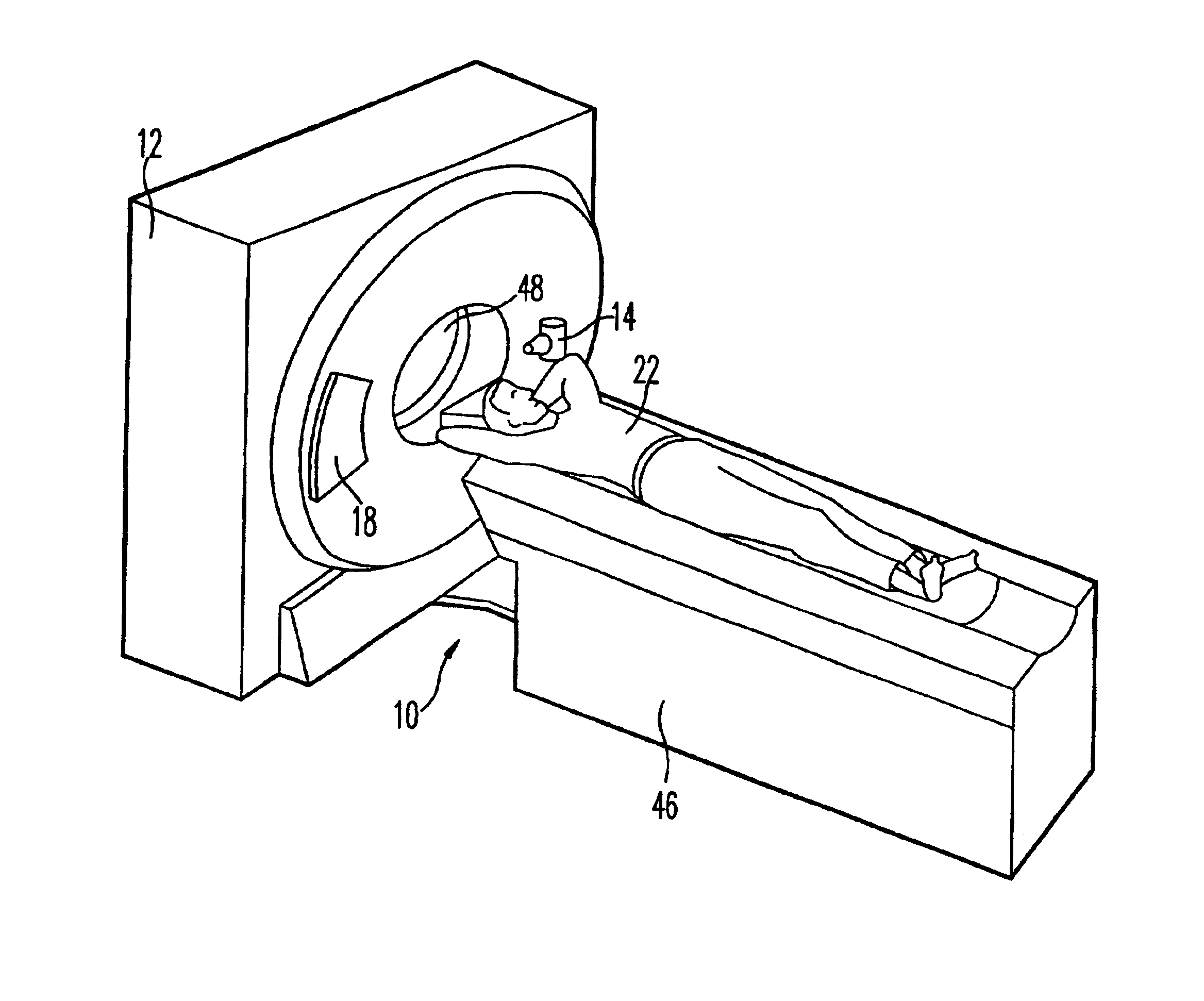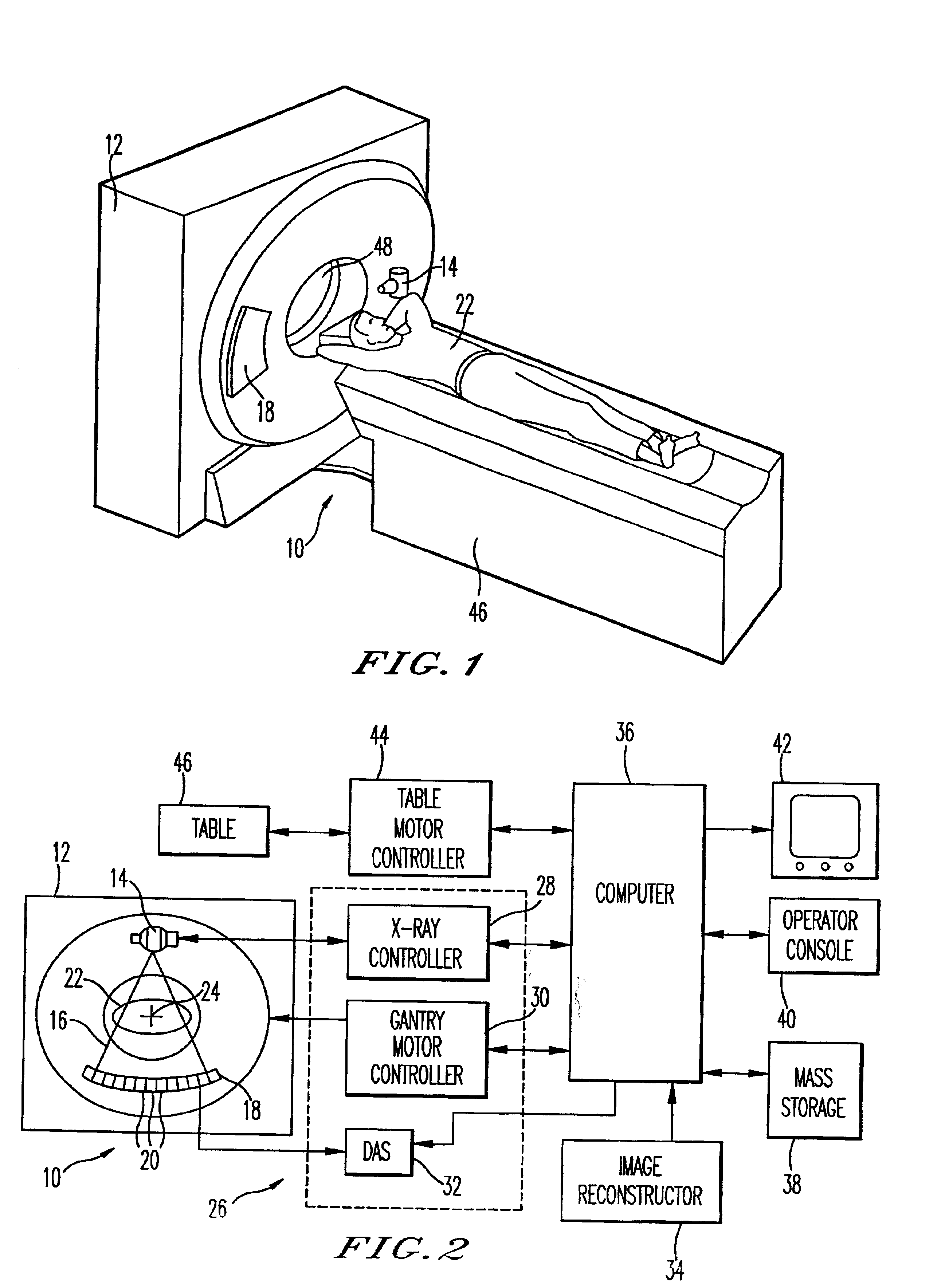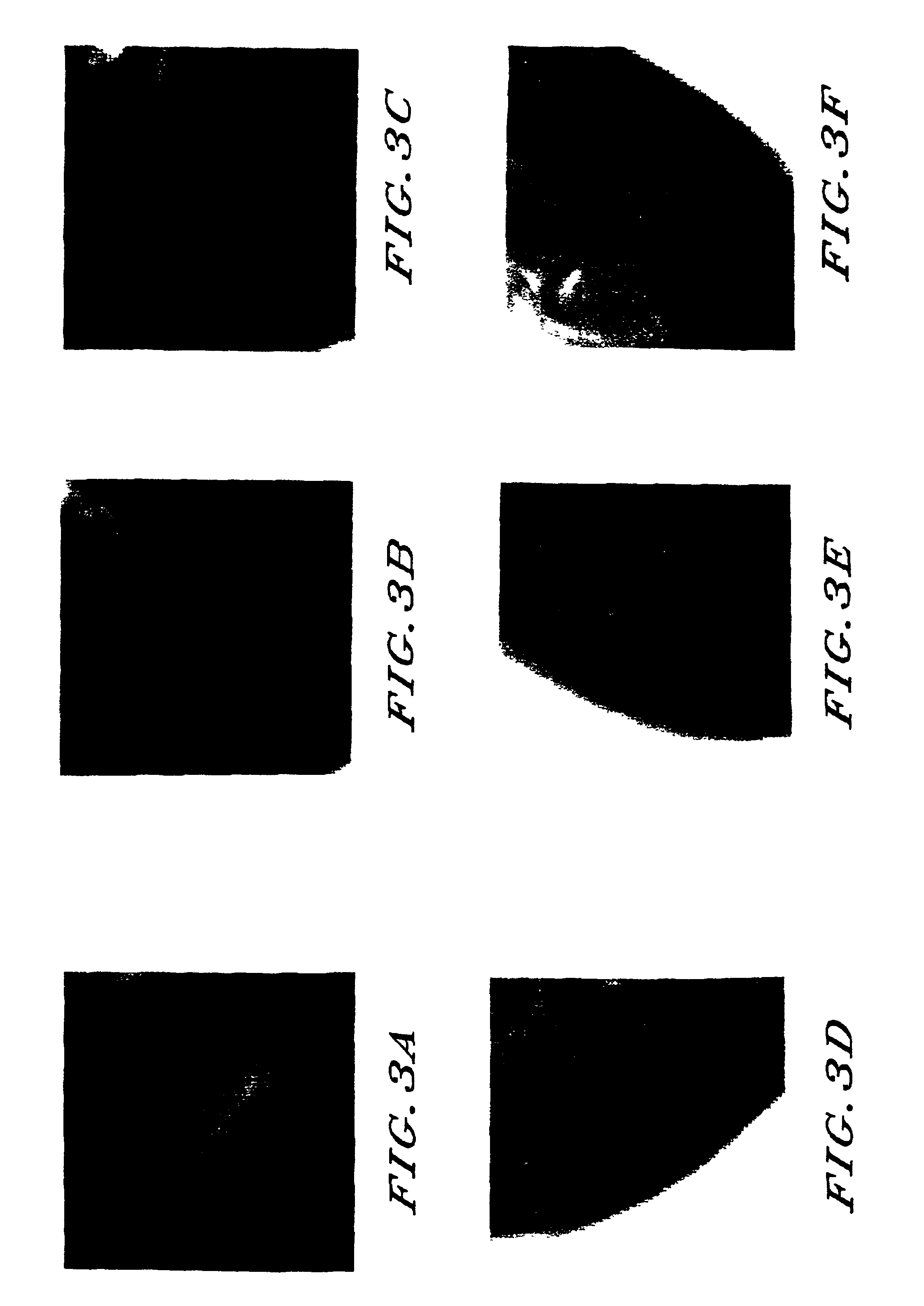Computerized method for determination of the likelihood of malignancy for pulmonary nodules on low-dose CT
a pulmonary nodule and probability technology, applied in the field of computerized methods for determining the likelihood of malignancy of pulmonary nodules on low-dose ct xray devices, can solve the problems of radiologists in fairly high demand, difficult to diagnose pulmonary nodules, and process is particularly time-consuming, so as to optimize the accuracy of the method and optimize the accuracy of the diagnosis
- Summary
- Abstract
- Description
- Claims
- Application Information
AI Technical Summary
Benefits of technology
Problems solved by technology
Method used
Image
Examples
Embodiment Construction
Materials and Methods
[0046]Referring to FIGS. 1 and 2, an exemplary computed tomography (CT) imaging system 10 is shown as including a gantry 12. Gantry 12 has an X-ray source 14 that projects a beam of X-rays 16 toward a detector array 18 on the opposite side of gantry 12. Detector array 18 is formed by detector elements 20 which together sense the projected X-rays that pass through a medical patient 22. Each detector element 20 produces an electrical signal that represents the intensity of an impinging X-ray beam and hence the attenuation of the beam as it passes through patient 22. During a scan to acquire X-ray projection data, gantry 12 and the components mounted thereon rotate about a center of rotation 24.
[0047]Rotation of gantry 12 and the operation of X-ray source 14 are governed by a control mechanism 26 of CT system 10. Control mechanism 26 includes an X-ray controller 28 that provides power and timing signals to X-ray source 14 and a gantry motor controller 30 that contr...
PUM
 Login to View More
Login to View More Abstract
Description
Claims
Application Information
 Login to View More
Login to View More - R&D
- Intellectual Property
- Life Sciences
- Materials
- Tech Scout
- Unparalleled Data Quality
- Higher Quality Content
- 60% Fewer Hallucinations
Browse by: Latest US Patents, China's latest patents, Technical Efficacy Thesaurus, Application Domain, Technology Topic, Popular Technical Reports.
© 2025 PatSnap. All rights reserved.Legal|Privacy policy|Modern Slavery Act Transparency Statement|Sitemap|About US| Contact US: help@patsnap.com



